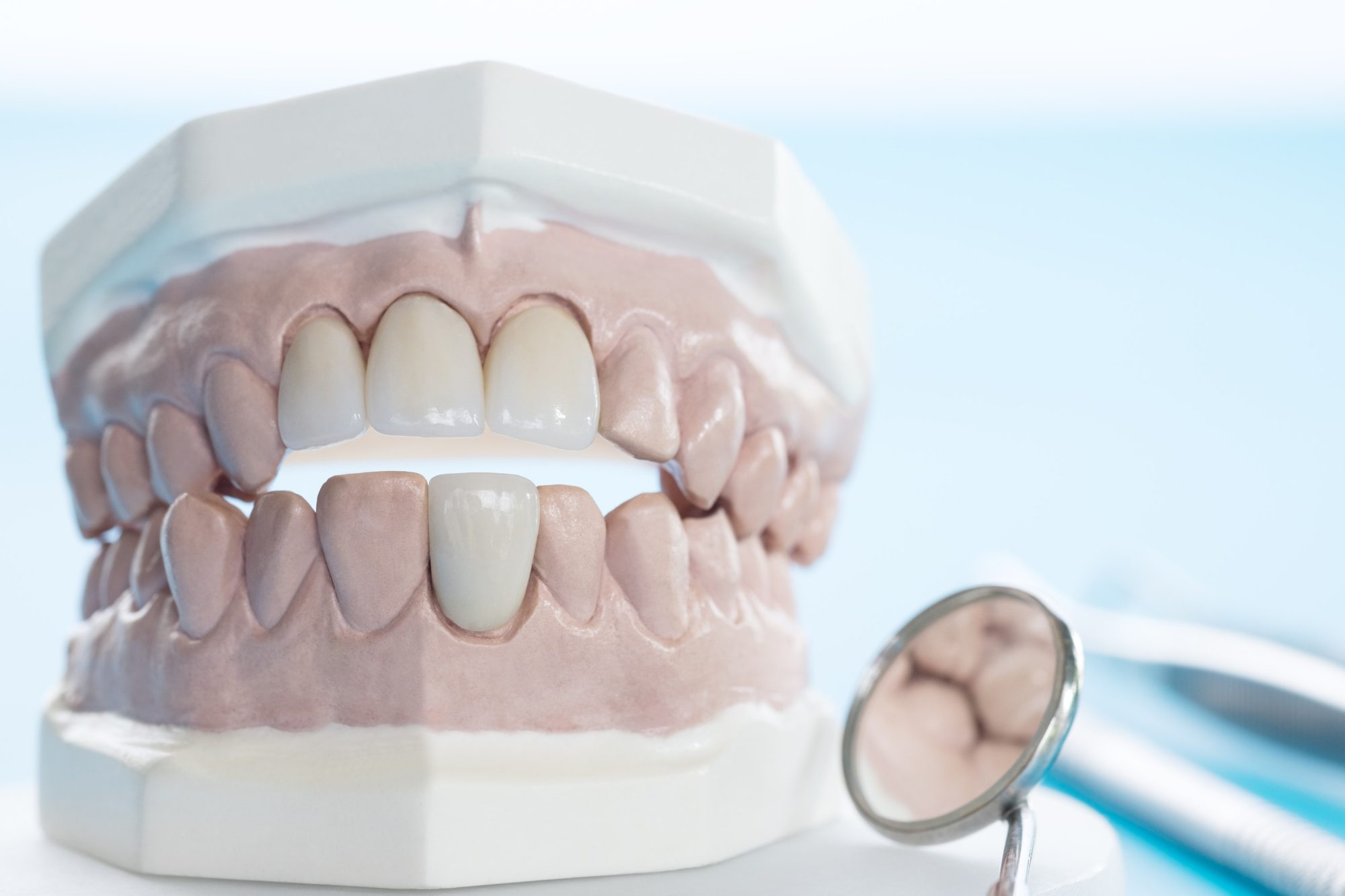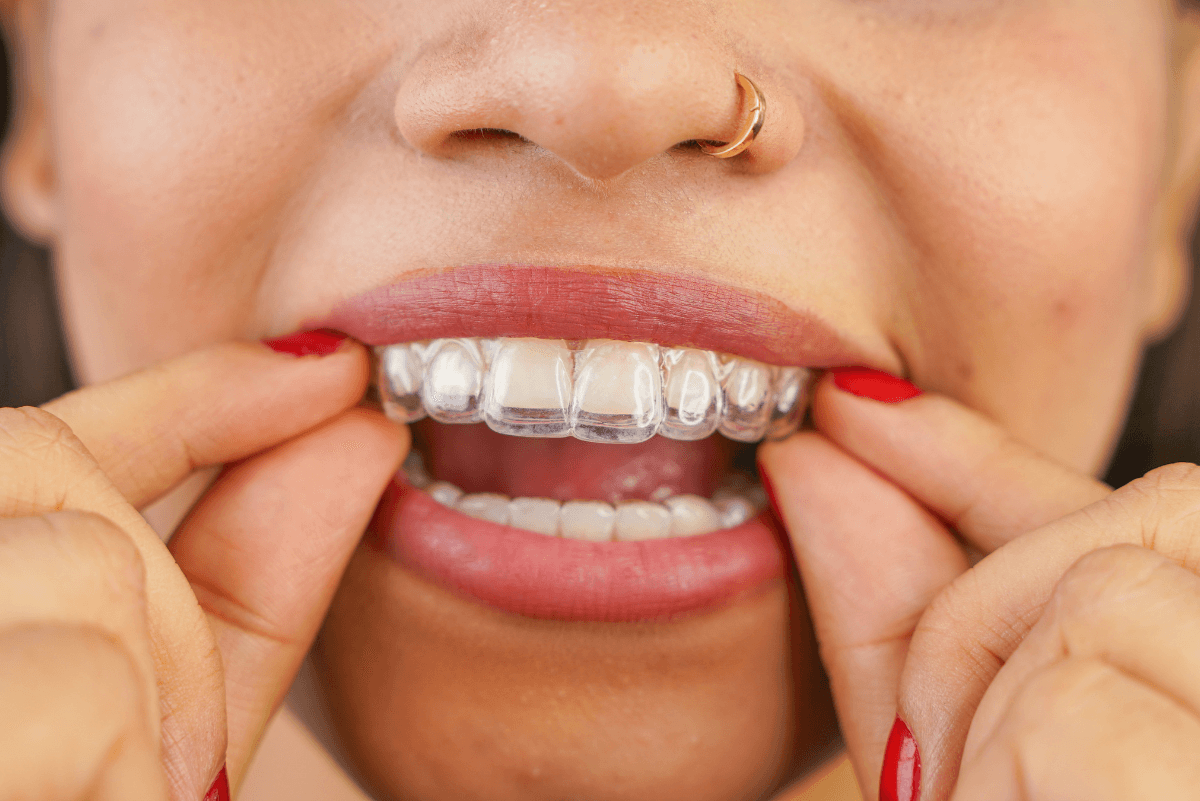If you’re missing several teeth, you’ve likely been presented with two options: dental implants or partial dentures. Both can restore your ability to eat, speak, and smile with comfort, but they work very differently and come with distinct advantages and trade-offs.
This article explains the key differences between dental implants and partial dentures, including how each option affects long-term comfort, function, and oral health. You’ll also find updated clinical insight, before-and-after photos, and guidance on who’s best suited for each approach.

TL;DR
Trying to decide between dental implants and partial dentures? Implants offer long-term comfort, bite support, and help preserve bone, while partial dentures may be more affordable initially but often come with trade-offs like movement, increased maintenance, and added pressure on natural teeth. This article compares both options in terms of cost, function, appearance, and care, so you can make a well-informed choice.
🦷 Thinking about dental implants in Calgary? Book a consultation to explore your options.
Dental Implants vs. Partial Dentures: What’s the Difference?
If you're deciding between dental implants and partial dentures, it's helpful to start with a clear understanding of how each option works and what they’re designed to do. While both can restore missing teeth, they function (and feel) very differently.
What Is a Dental Implant?
A dental implant is a small titanium post that is surgically placed into the jawbone to replace the root of a missing tooth. Depending on how many implants are placed, they can support anything from a single crown to a full set of replacement teeth. Implants are fixed in place and are widely considered the closest alternative to natural teeth—both in function and appearance.
Treatment is typically completed in two phases:
→ The first involves surgical placement of the implant, usually performed by a periodontist or oral surgeon. Most patients experience minimal discomfort and recover quickly.
→ After a healing period of approximately 3 to 6 months, the second phase begins: the placement of a custom crown, bridge, or denture onto the implant.
At Eau Claire Park Dental, we coordinate closely with trusted dental implant specialists to ensure your surgical care is precise and seamless. Once healed, your final restoration is completed in our clinic. We provide dental implants in Calgary with a strong focus on bite alignment, longevity, and aesthetic detail.

Want to see more real cases?
Explore our dental implant smile gallery to view examples of restored smiles and lasting results.
What Is a Partial Denture?
A partial denture is a removable dental prosthesis used to replace one or more missing teeth. It typically clips onto your remaining natural teeth using metal or acrylic clasps and must be taken out several times daily for cleaning.
Partial dentures are often considered a short- to medium-term solution. They can restore appearance and basic function, but they don’t offer the same stability or bite support as dental implants. Because they rest on both your gums and neighbouring teeth, they may move slightly during eating or speaking.
Over time, partial dentures can place added pressure on the teeth they hook onto, which may increase the risk of wear, fractures, or cavities, especially if food collects around the clasps and isn’t properly cleaned.
While they remain a more affordable option upfront, partial dentures come with important limitations when it comes to comfort, long-term tooth preservation, and overall bite stability.


Pros and Cons of Dental Implants
Dental implants are often considered the gold standard for tooth replacement, and for good reason. They look, feel, and function more like natural teeth than any other option available today. But like any treatment, they come with important considerations.
Benefits of Dental Implants
✅ Fixed and secure. Unlike dentures, implants don’t move or shift once healed.
✅ Natural feel and appearance. They closely replicate the look and function of natural teeth.
✅ Preserve surrounding teeth. They don’t require cutting down healthy teeth, as bridges do.
✅ Help maintain bone structure. Implants stimulate the jawbone and help prevent bone loss.
✅ Support full chewing function. They restore bite strength and stability, allowing you to eat comfortably and confidently.
✅ Long-term stability. With proper care, implants can last decades or even a lifetime. Here’s how to care for your dental implants to protect that investment long-term.
Cons of Dental Implants
❌ Healing time. Implants require a healing period (typically 3–6 months) before the final restoration can be placed.
❌ Multiple appointments. The process involves several visits over a few months.
❌ Temporary restorations. During healing, a temporary crown or denture may be needed.
❌ Surgical risks. As with any procedure, there is a small risk of surgical complications or implant failure (especially in patients with gum disease, that smoke or have certain medical conditions).
❌ Bite alignment matters. If your bite is misaligned, excessive pressure can increase the risk of implant failure. A proper treatment plan, including bite assessment and management, is critical to long-term success.
Pros and Cons of Partial Dentures
Partial dentures can be a suitable option for some patients, especially those looking for a more affordable or non-surgical solution. However, they come with trade-offs that are important to understand, particularly when it comes to comfort, durability, and the impact on your remaining teeth.
Benefits of Partial Dentures
✅ Lower initial cost. Partial dentures are generally less expensive than implants upfront.
✅ Non-surgical option. Ideal for patients who are not candidates for surgery or prefer to avoid it.
✅ Relatively quick to fabricate. Treatment can often be completed within a few weeks.
✅ Can replace multiple teeth. A single appliance can replace several teeth at once.
Cons of Partial Dentures
❌ Removable. They must be taken out multiple times daily for cleaning, which some patients find inconvenient.
❌ Pressure on natural teeth. Partial dentures hook onto your existing teeth, which can lead to excess force, wear, or even fractures over time.
❌ Higher risk of decay. Food tends to collect under the partial and around the clasps. It's easy to miss these areas when brushing, increasing the risk of plaque buildup and cavities.
❌ Limited bite support. If back teeth are missing, the denture rests on the gums and can move up and down when chewing. This places extra pressure on the front teeth, which can cause them to splay, wear down and chip.
❌ May require adjustments. Over time, changes in your bone and gum structure can cause the denture to loosen or become uncomfortable.
Cost Comparison: Dental Implants vs. Partial Dentures
One of the most common reasons patients consider partial dentures over dental implants is cost. While partial dentures often have a lower upfront price, it’s important to think beyond the initial investment.
Partial Dentures: Lower Cost, Higher Maintenance
Partial dentures typically cost less at the start, but they often require ongoing adjustments, relines, and eventual replacement, especially as your bite and bone structure change over time. The long-term maintenance adds up, and the impact on surrounding teeth may lead to further treatment down the road.
Dental Implants: Higher Initial Cost, Long-Term Value
Dental implants may have a higher upfront cost, but they’re designed to be a permanent, stable solution. They don’t rely on other teeth for support, they help preserve bone, and they rarely need to be replaced when properly cared for. In most cases, they offer better long-term value by reducing the need for future dental work.
Quick Comparison: Dental Implants vs. Partial Dentures
Still weighing your options? Here’s a side-by-side comparison of the most important factors patients consider when choosing between dental implants and partial dentures. This table summarizes differences in comfort, function, maintenance, and long-term value.
| Feature | Dental Implants | Partial Dentures |
|---|---|---|
| Longevity | 10–20+ years (often lifelong with proper care) | 5–10 years (may require relining or replacement) |
| Appearance | Closely mimics the look and feel of natural teeth | Can appear bulkier; metal clasps may be visible |
| Function | Strong bite support, doesn’t shift when chewing or speaking | May move during eating or speaking, food can get trapped underneath |
| Comfort | Feels like a natural tooth once healed | Can feel bulky or cause pressure on gums or surrounding teeth |
| Maintenance | Brush and floss like regular teeth | Must be removed and cleaned daily |
| Impact on Other Teeth | Does not affect adjacent teeth | Clasps can stress neighboring teeth and increase decay risk |
| Bone Preservation | Stimulates the jawbone and helps prevent bone loss | Does not prevent bone loss; may accelerate it over time |
| Treatment Timeline | Several months (implant surgery + healing + final restoration) | Typically ready in a few weeks |
| Cost | Higher upfront cost; strong long-term value | Lower initial cost; may require more frequent maintenance |
Who Is a Good Candidate for Each Option?
Choosing between dental implants and partial dentures often comes down to a combination of oral health factors, lifestyle goals, and long-term priorities. Here's a quick guide to help you understand which option may be the better fit.
You may be a good candidate for dental implants if you:
- Have healthy gums and enough jawbone to support an implant
- Are in good general health, a non-smoker and able to undergo minor surgery
- Want a fixed, long-term solution that functions like natural teeth
- Prefer not to have a removable appliance
- Are committed to good home care and regular dental visits
- Have missing back teeth and want to maintain proper bite support
You may be a better candidate for a partial denture if you:
- Want a lower-cost, non-surgical option for replacing multiple teeth
- Are unable to have implant surgery due to medical or bone limitations
- Need a temporary solution before a more permanent one is placed
- Prefer a faster timeline or a less-invasive treatment
- Are missing several teeth in different areas of the mouth
Which Option Is Better? A Clinical Perspective
While both dental implants and partial dentures have their place in dentistry, many patients are looking for a solution that will last, feel natural, and protect their overall oral health. In most cases, dental implants offer the greatest long-term benefit—especially when replacing one or more teeth in functional areas of the mouth.
“Whenever possible, I recommend dental implants over partial dentures. Implants help maintain bone, protect the bite, and provide long-term stability, whereas partials often lead to complications over time. They can put excess pressure on natural teeth, make oral hygiene more difficult, and don’t provide the same kind of bite support. The only real advantage of a partial denture is cost, and even that gap is narrowing.” —Dr. Jennifer Graas
Partial dentures may be appropriate in certain situations. For example, as a temporary solution or when a patient is not a candidate for surgery. But for patients who want predictability, durability, and confidence in their smile, dental implants tend to offer the clearest path forward.
A Better Smile Begins with a Well-Informed Decision
When it comes to restoring your smile, comfort, and bite function, the best solution is one that supports your long-term oral health, not just the short-term fix.
Dental implants offer unmatched stability, bone preservation, and a natural feel, making them the preferred option for many patients. While partial dentures remain a valid choice in specific situations, they often come with compromises that can affect both comfort and the health of your remaining teeth over time.
If you're exploring dental implants in Calgary, the best place to start is with a conversation.
Book a consultation at Eau Claire Park Dental to discuss your goals, review your treatment options, and create a plan that supports your smile for years to come.
Trusted Resources:



